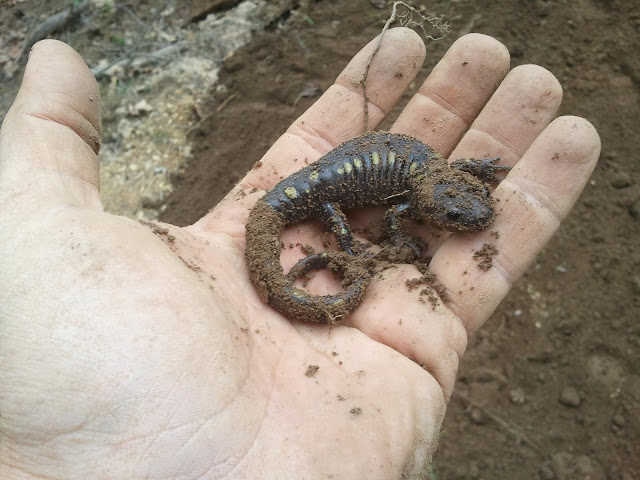We found this very mature snapping turtle (Chelydra serpentina) near the top of the sand/silt bank to the smaller channel of the South Branch. The back of her shell was covered with mud, but otherwise we didn't see evidence of egg-laying nearby. If this turtle was laying eggs, it would be about two to six weeks earlier than predicted. Like many reptiles, snapping turtles can store male sperm for several years, possibly because they may sense when conditions are better. That may be giving them too much credit. If eggs are incubated from 75-80 F (24-26 C), they are nearly always male; but if the surrounding environment is significantly cooler (20 C) or warmer (30 C), they're nearly always female.
Last year we found a snapping turtle that seemed to be struggling up a steep slope. I've been handling these turtles comfortably since I was a pup, so I lifted it to the top of the steep slope, immediately discovering that it had just deposited about 12 ping-pong sized eggs. I tried to put her back, but she wanted nothing to do with the nest. I felt terrible whenever I thought of it, even though I really don't want a bunch of snapping turtles in our ponds.



